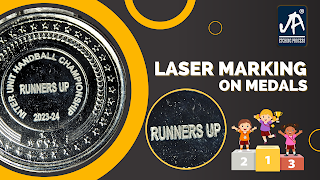Sculpting Precision: 3D Laser on Bike Grip Moulds
Introduction:
In the ever-evolving landscape of manufacturing, the
integration of cutting-edge technologies has revolutionized precision
engineering. One such groundbreaking process is the utilization of 3D laser
technology on the intricate surfaces of bike grip moulds. In this blog post, we
delve into the transformative realm of 3D surface
etching, exploring the benefits of laser technology in crafting bike handle
grips with unparalleled precision.
Unveiling the Power
of 3D Surface Etching:
Traditional moulding processes often face challenges when
dealing with intricate designs, particularly on curved surfaces like bike
handle grips. Enter 3D surface etching—a technique that employs laser precision
to create intricate patterns, textures, and designs on three-dimensional
surfaces.
The Marvel of Laser
Technology:
Laser etching on metal surfaces has become a hallmark of
precision engineering. This non-contact process employs a high-powered laser
beam to remove material from the surface, resulting in detailed and intricate
designs. When applied to bike grip moulds, the result is a flawless finish that
enhances both aesthetics and functionality.
Benefits of 3D Laser
Etching on Bike Grip Moulds:
Precision Beyond
Imagination:
3D laser etching brings an unprecedented level of precision
to bike grip moulds. Intricate designs, logos, and textures can be etched with
micron-level accuracy, ensuring a perfect reproduction of the intended pattern.
Enhanced Grip and
Comfort:
The technology allows for the creation of ergonomic patterns
that enhance the grip and comfort of bike handle grips. The textured surfaces
not only look stylish but also provide a superior tactile experience for
riders.
Durability and
Longevity:
Laser
etching on metal surfaces adds a layer of durability. The etched designs
become an integral part of the material, ensuring longevity and resistance to
wear and tear.
Customization
Options:
Manufacturers can offer a wide range of customization
options to cater to diverse consumer preferences. Whether it's a brand logo, a
unique texture, or personalized patterns, 3D laser etching provides flexibility
in design.
Efficiency in
Production:
Unlike traditional methods that may require multiple steps,
3D laser etching is a more efficient process. It reduces production time and
allows manufacturers to meet demands without compromising on quality.
The Role of
Sandblasting in Finishing:
While 3D laser etching takes care of precision and design, sandblasting
plays a crucial role in the finishing touches. Sandblasting involves propelling
fine particles at high velocity onto the surface, creating a uniform texture
and enhancing the visual appeal of the bike grip moulds. This combination of
technologies results in a product that not only meets but exceeds industry
standards.
Conclusion:
In the realm of precision engineering, the marriage of 3D surface etching and laser technology has elevated the production of bike handle grips to new heights. The ability to craft intricate designs with unparalleled precision, combined with the efficiency of the process, makes 3D laser etching a game-changer in the manufacturing industry. As bike enthusiasts seek both style and functionality, manufacturers embracing these advanced techniques are at the forefront of delivering products that meet and exceed consumer expectations. The future of bike grip moulding has undoubtedly been sculpted by the precision of 3D laser etching.


Comments
Post a Comment